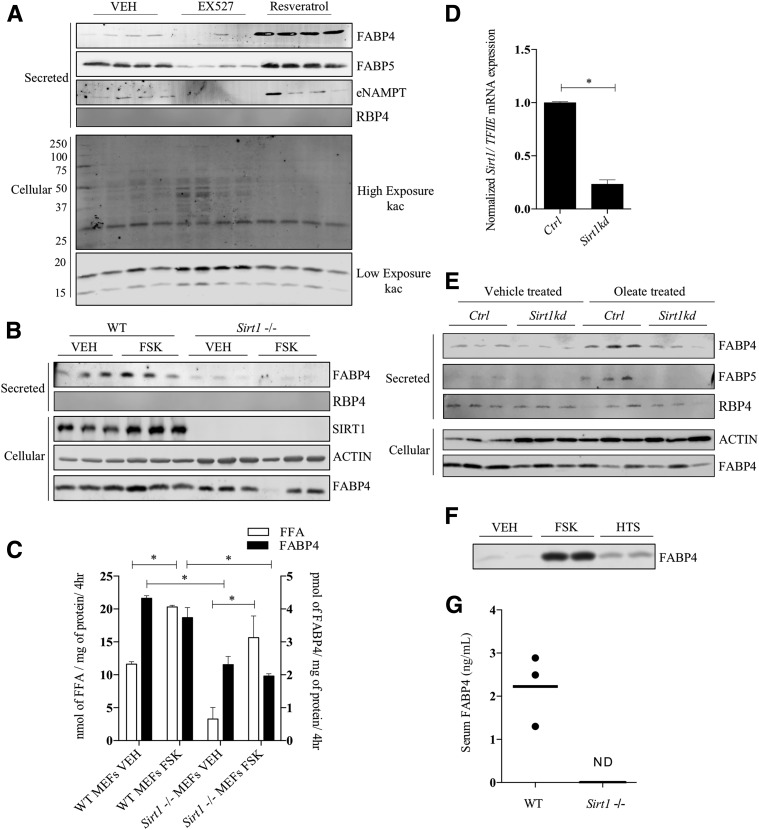Figure 4.
FABP4 secretion in response to regulators of SIRT1. A: Differentiated 3T3-L1 adipocytes were treated with 10 μmol/L EX527 or 10 μmol/L resveratrol for 16 h, and the secretion of FABP4, FABP5, eNAMPT, and RBP4 was determined immunochemically. In parallel, the cellular extract was probed for acetylated lysine using the polyspecific anti-Kac antibody. The lysine acetylation results are from a single gel but are shown as different exposures to allow a better representation of the resulting signal across the entire blot. B: Differentiated Sirt1-deficient and control MEFs were treated with VEH or 20 μmol/L FSK for 4 h and secreted FABP4 and RBP4 and cellular SIRT1, β-actin, and FABP4 determined immunochemically. C: Quantitative analysis of the levels of FABP4 (from B) and FFA secreted by control and SIRT1-deficient adipocytes. D: Levels of Sirt1 mRNA relative to TFIIE measured in control and Sirt1 silenced 3T3-L1 adipocytes. E: Control and Sirt1-silenced 3T3-L1 adipocytes were preincubated for 18 h with 400 μmol/L potassium oleate complexed to 100 μmol/L BSA. The basal levels of FABP4, FABP5, and RBP4 secretion were determined immunochemically. F: Differentiated 3T3-L1 adipocytes were incubated with 50 μmol/L of the pan-FABP inhibitor HTS01037 (HTS) or 20 μmol/L FSK, and the levels of secreted FABP4 were determined immunochemically. G: Serum FABP4 levels in chow-fed wild-type (WT) and Sirt1 null C57BL/6J mice as evaluated by an ELISA (Lifespan Biosciences Inc.) conducted per the manufacturer’s protocol. *P < 0.05. hr, hour; kd, knockdown; ND, not detected.

